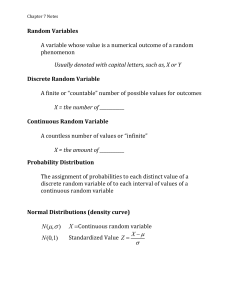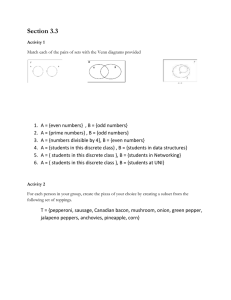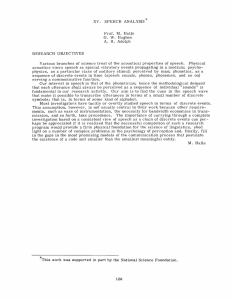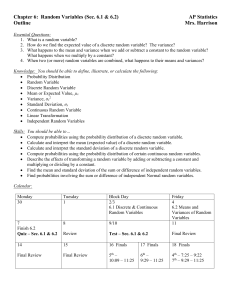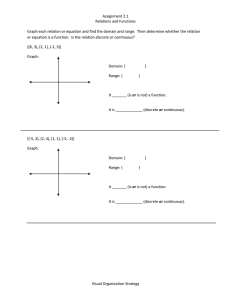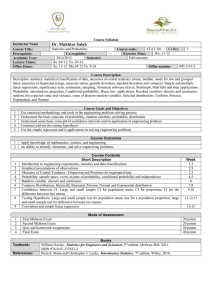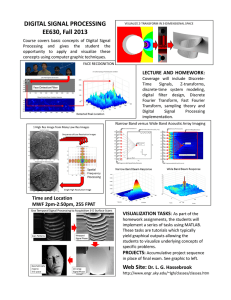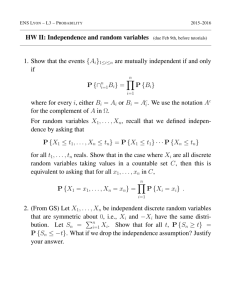Solution
advertisement
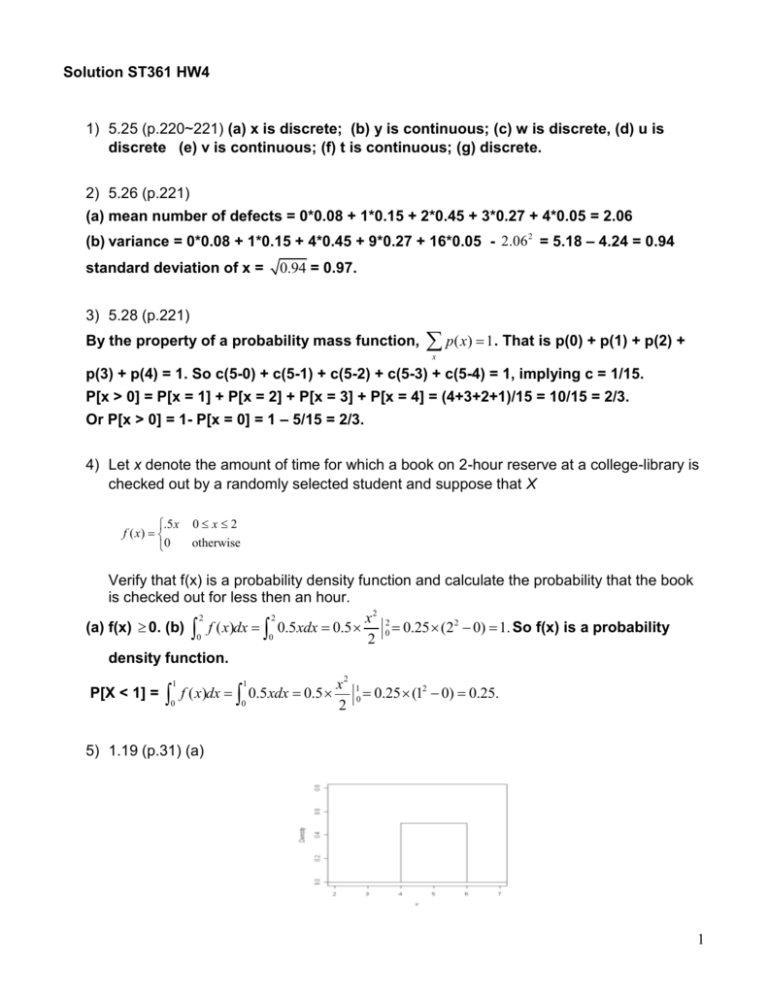
Solution ST361 HW4 1) 5.25 (p.220~221) (a) x is discrete; (b) y is continuous; (c) w is discrete, (d) u is discrete (e) v is continuous; (f) t is continuous; (g) discrete. 2) 5.26 (p.221) (a) mean number of defects = 0*0.08 + 1*0.15 + 2*0.45 + 3*0.27 + 4*0.05 = 2.06 (b) variance = 0*0.08 + 1*0.15 + 4*0.45 + 9*0.27 + 16*0.05 - 2.06 2 = 5.18 – 4.24 = 0.94 standard deviation of x = 0.94 = 0.97. 3) 5.28 (p.221) By the property of a probability mass function, p( x) 1. That is p(0) + p(1) + p(2) + x p(3) + p(4) = 1. So c(5-0) + c(5-1) + c(5-2) + c(5-3) + c(5-4) = 1, implying c = 1/15. P[x > 0] = P[x = 1] + P[x = 2] + P[x = 3] + P[x = 4] = (4+3+2+1)/15 = 10/15 = 2/3. Or P[x > 0] = 1- P[x = 0] = 1 – 5/15 = 2/3. 4) Let x denote the amount of time for which a book on 2-hour reserve at a college-library is checked out by a randomly selected student and suppose that X .5 x f ( x) 0 0 x2 otherwise Verify that f(x) is a probability density function and calculate the probability that the book is checked out for less then an hour. 2 2 x2 2 2 (a) f(x) 0. (b) f ( x)dx 0.5 xdx 0.5 0 0.25 (2 0) 1. So f(x) is a probability 0 0 2 density function. P[X < 1] = 1 0 x2 1 2 f ( x)dx 0.5 xdx 0.5 0 0.25 (1 0) 0.25. 0 2 1 5) 1.19 (p.31) (a) 1 (b) (Note that “long run proportion” means “probability” here.) P[4.5 x 5.5] = (5.5 - 4.5) * 0.5 = 0.5 (the area under the density function between 4.5 and 5.5) . P[x 4.5] = (6 – 4.5)*0.5 = 0.75. (c) Since the area under the curve from 4 to 5 is 0.5, x0 = 5 is the median. 2


